Abstract
Rates and patterns of responding of pigeons under response-independent and response-dependent schedules of brief-stimulus presentation were compared by superimposing 3-min brief-stimulus schedules on a 15-min fixed-interval schedule of food presentation. The brief-stimulus schedules were fixed time, fixed interval, variable time, and variable interval. When the brief stimulus was paired with food presentation, its effects depended upon the schedule and ongoing rates. Fixed- and variable-interval brief-stimulus schedules enhanced the low rates normally occurring early in the 15-min interval, whereas fixed- and variable-time schedules suppressed these rates. Although the overall rates later in the interval were not affected to any great extent, the fixed brief-stimulus schedules generated patterns of positively accelerated responding between stimulus presentations. These patterns appeared less frequently under the variable brief-stimulus schedules. Initially, when not paired with food delivery, presentations of the brief stimulus produced relatively little effect on either response rate or patterning. However, once the stimulus had accompanied food presentation, the original performance under the nonpaired condition was not recovered. The effects were more like those occurring when the stimulus was paired with food.
Full text
PDF

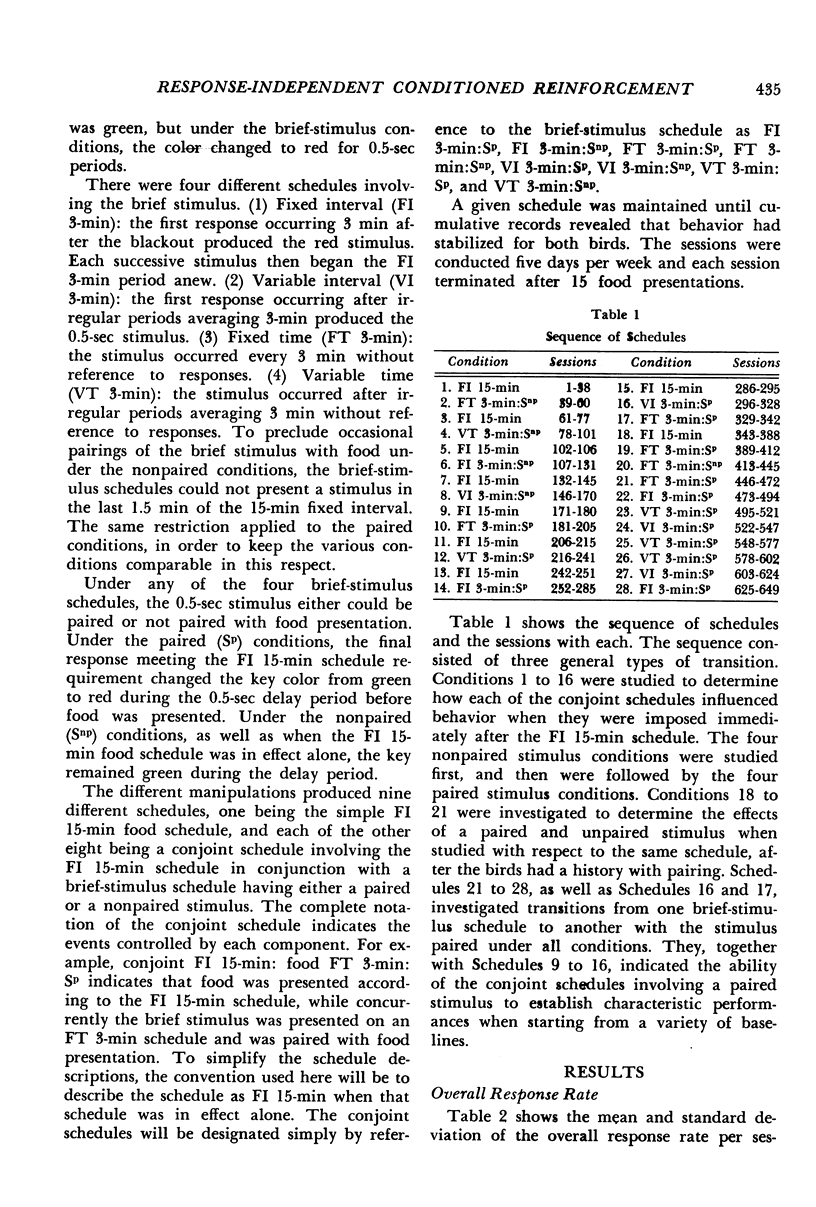

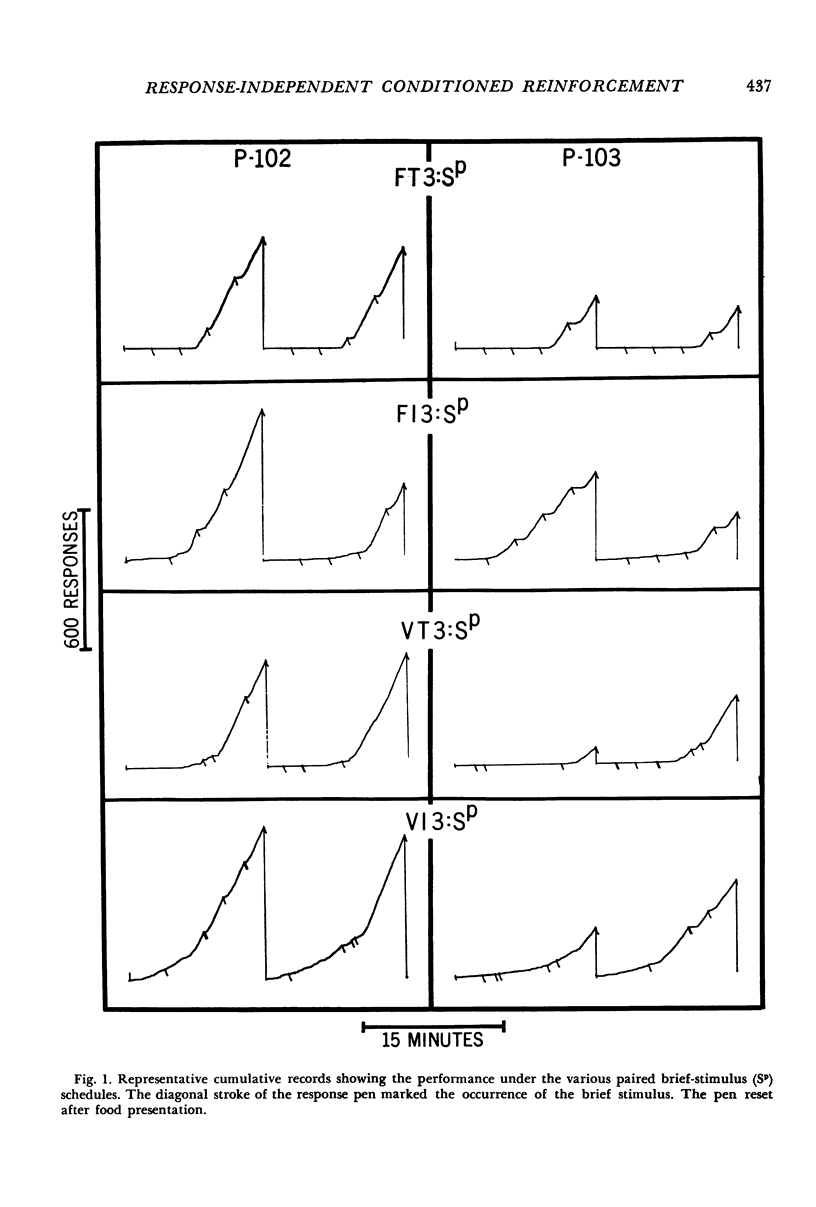


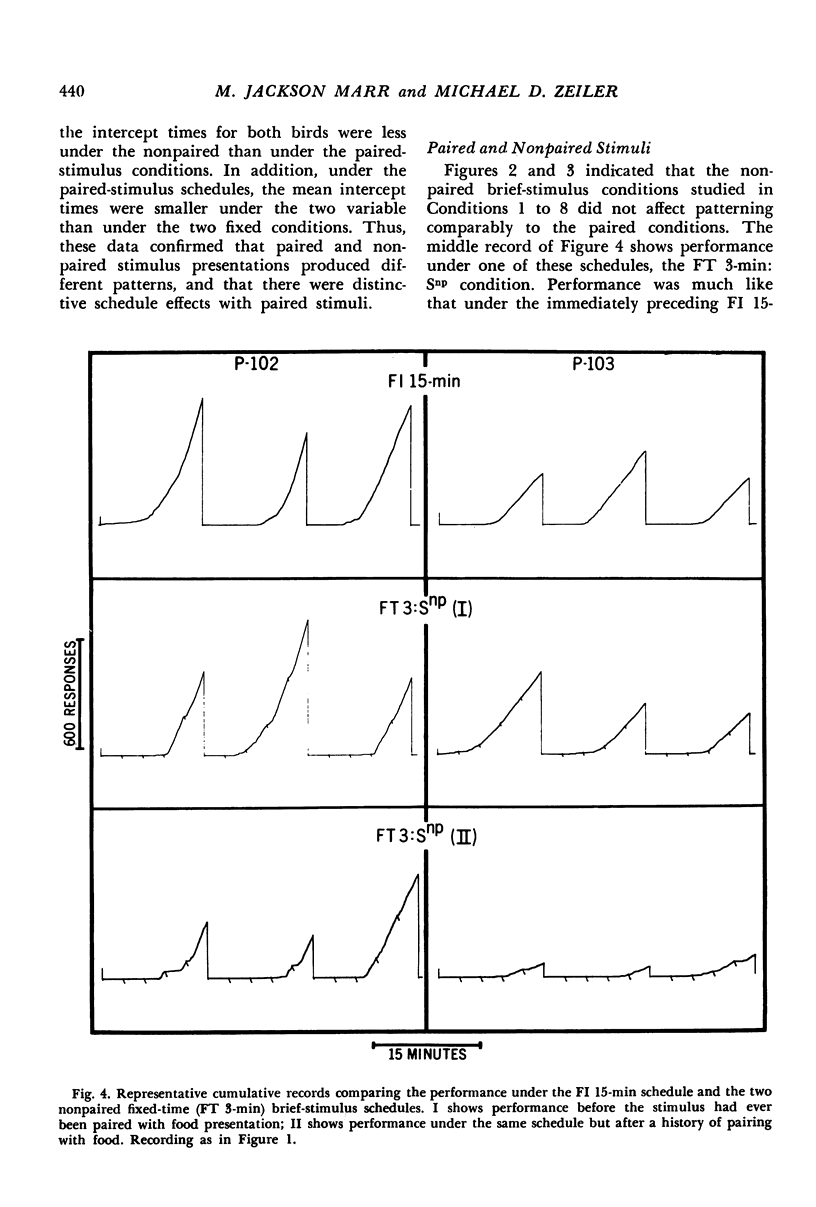

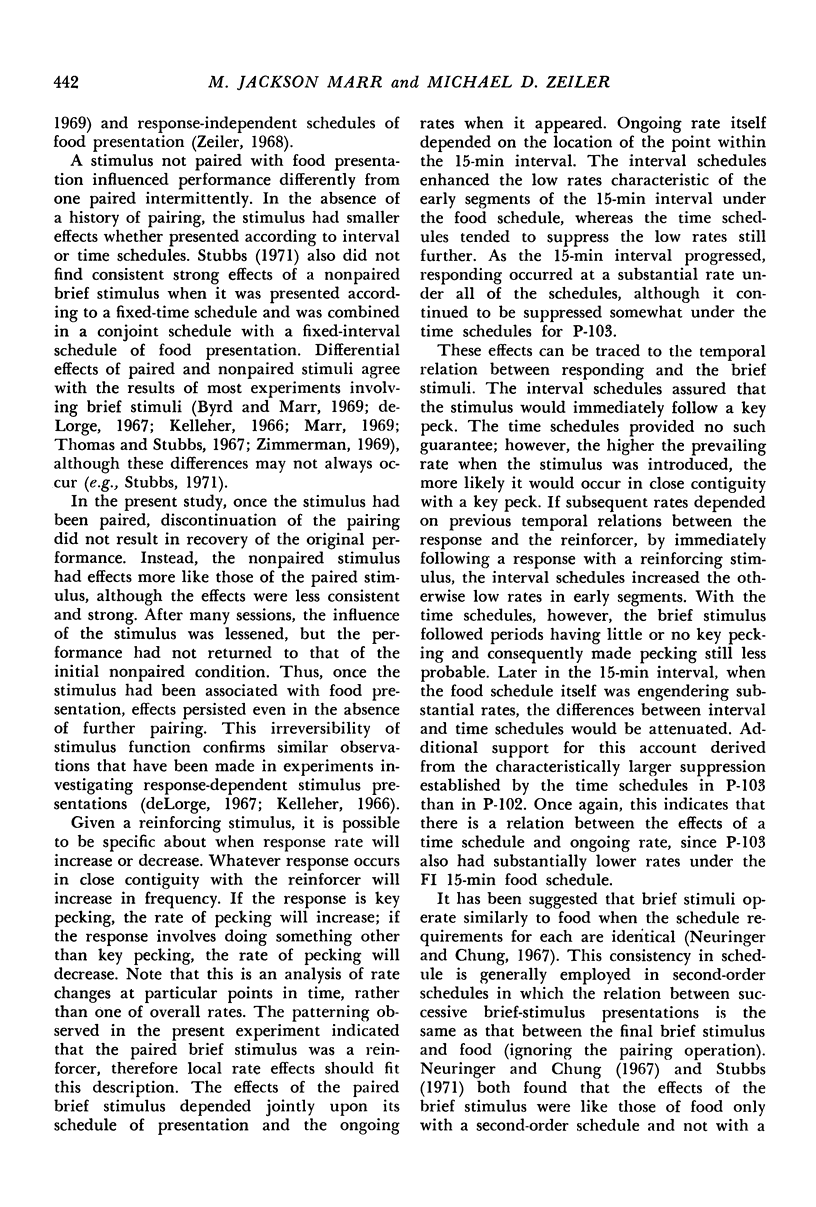

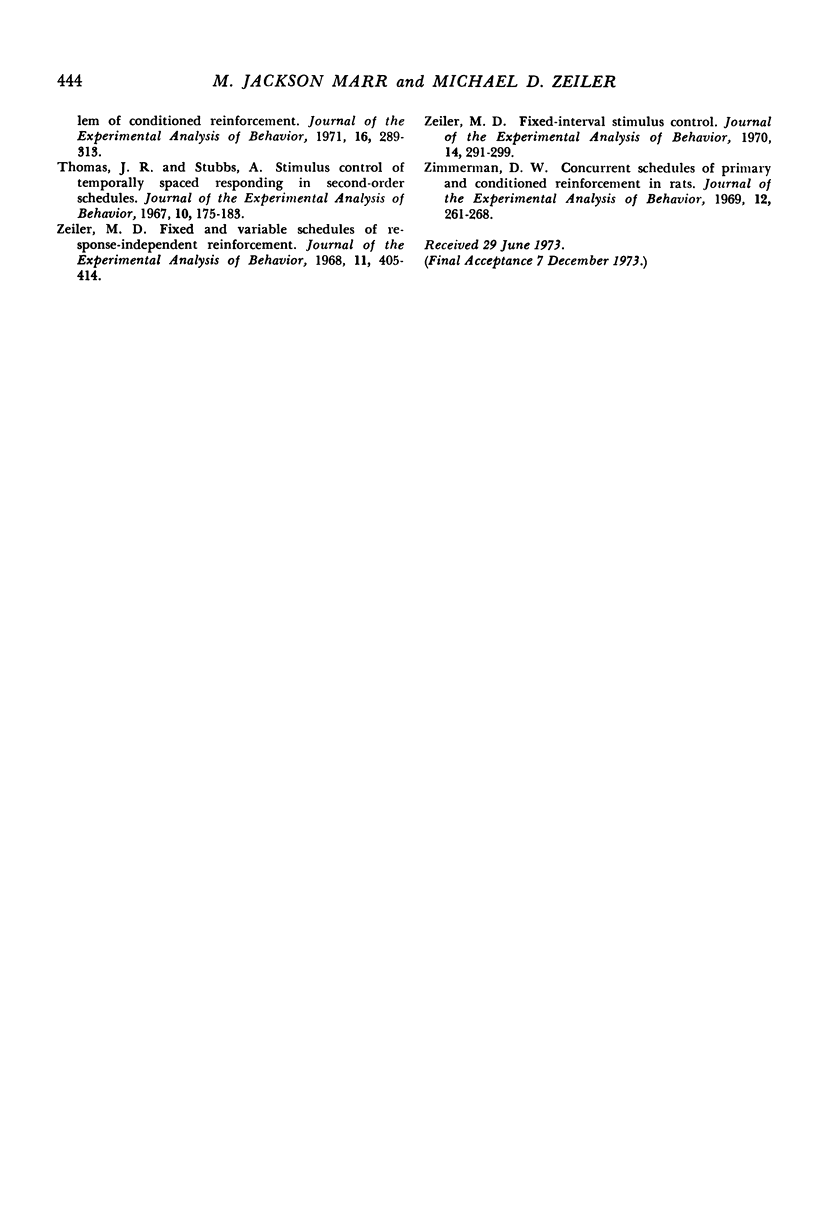
Selected References
These references are in PubMed. This may not be the complete list of references from this article.
- APPEL J. B., HISS R. H. The discrimination of contingent from noncontingent reinforcement. J Comp Physiol Psychol. 1962 Feb;55:37–39. doi: 10.1037/h0044613. [DOI] [PubMed] [Google Scholar]
- Byrd L. D., Marr M. J. Relations between patterns of responding and the presentation of stimuli under second-order schedules. J Exp Anal Behav. 1969 Sep;12(5):713–722. doi: 10.1901/jeab.1969.12-713. [DOI] [PMC free article] [PubMed] [Google Scholar]
- Catania A. C., Reynolds G. S. A quantitative analysis of the responding maintained by interval schedules of reinforcement. J Exp Anal Behav. 1968 May;11(3 Suppl):327–383. doi: 10.1901/jeab.1968.11-s327. [DOI] [PMC free article] [PubMed] [Google Scholar]
- DEWS P. B. A BEHAVIORAL EFFECT OF AMOBARBITAL. Naunyn Schmiedebergs Arch Exp Pathol Pharmakol. 1964 Jun 22;248:296–307. doi: 10.1007/BF00246347. [DOI] [PubMed] [Google Scholar]
- De Lorge J. Fixed-interval behavior maintained by conditioned reinforcement. J Exp Anal Behav. 1967 May;10(3):271–276. doi: 10.1901/jeab.1967.10-271. [DOI] [PMC free article] [PubMed] [Google Scholar]
- De Lorge J. The effects of brief stimuli presented under a multiple schedule of second-order schedules. J Exp Anal Behav. 1971 Jan;15(1):19–25. doi: 10.1901/jeab.1971.15-19. [DOI] [PMC free article] [PubMed] [Google Scholar]
- Dews P. B. Studies on responding under fixed-interval schedules of reinforcement: the effects on the pattern of responding of changes in requirements at reinforcement. J Exp Anal Behav. 1969 Mar;12(2):191–199. doi: 10.1901/jeab.1969.12-191. [DOI] [PMC free article] [PubMed] [Google Scholar]
- Kelleher R. T. Conditioned reinforcement in second-order schedules. J Exp Anal Behav. 1966 Sep;9(5):475–485. doi: 10.1901/jeab.1966.9-475. [DOI] [PMC free article] [PubMed] [Google Scholar]
- Lachter G. D., Cole B. K., Schoenfeld W. N. Response rate under varying frequency of non-contingent reinforcement. J Exp Anal Behav. 1971 Mar;15(2):233–236. doi: 10.1901/jeab.1971.15-233. [DOI] [PMC free article] [PubMed] [Google Scholar]
- Lattal K. A. Reponse-reinforcer independence and conventional extinction after fixed-interval and variable-interval schedules. J Exp Anal Behav. 1972 Jul;18(1):133–140. doi: 10.1901/jeab.1972.18-133. [DOI] [PMC free article] [PubMed] [Google Scholar]
- Neuringer A. J., Chung S. H. Quasi-reinforcement: control of responding by a percentage-reinforcement schedule. J Exp Anal Behav. 1967 Jan;10(1):45–54. doi: 10.1901/jeab.1967.10-45. [DOI] [PMC free article] [PubMed] [Google Scholar]
- Stubbs D. A. Second-order schedules and the problem of conditioned reinforcement. J Exp Anal Behav. 1971 Nov;16(3):289–313. doi: 10.1901/jeab.1971.16-289. [DOI] [PMC free article] [PubMed] [Google Scholar]
- Thomas J. R., Stubbs A. Stimulus control of temporally spaced responding in second-order schedules. J Exp Anal Behav. 1967 Mar;10(2):175–183. doi: 10.1901/jeab.1967.10-175. [DOI] [PMC free article] [PubMed] [Google Scholar]
- Zeiler M. D. Fixed and variable schedules of response-independent reinforcement. J Exp Anal Behav. 1968 Jul;11(4):405–414. doi: 10.1901/jeab.1968.11-405. [DOI] [PMC free article] [PubMed] [Google Scholar]
- Zeiler M. D. Fixed-interval stimulus control. J Exp Anal Behav. 1970 Nov;14(3):291–299. doi: 10.1901/jeab.1970.14-291. [DOI] [PMC free article] [PubMed] [Google Scholar]
- Zimmerman D. W. Concurrent schedules of primary and conditioned reinforcement in rats. J Exp Anal Behav. 1969 Mar;12(2):261–268. doi: 10.1901/jeab.1969.12-261. [DOI] [PMC free article] [PubMed] [Google Scholar]


